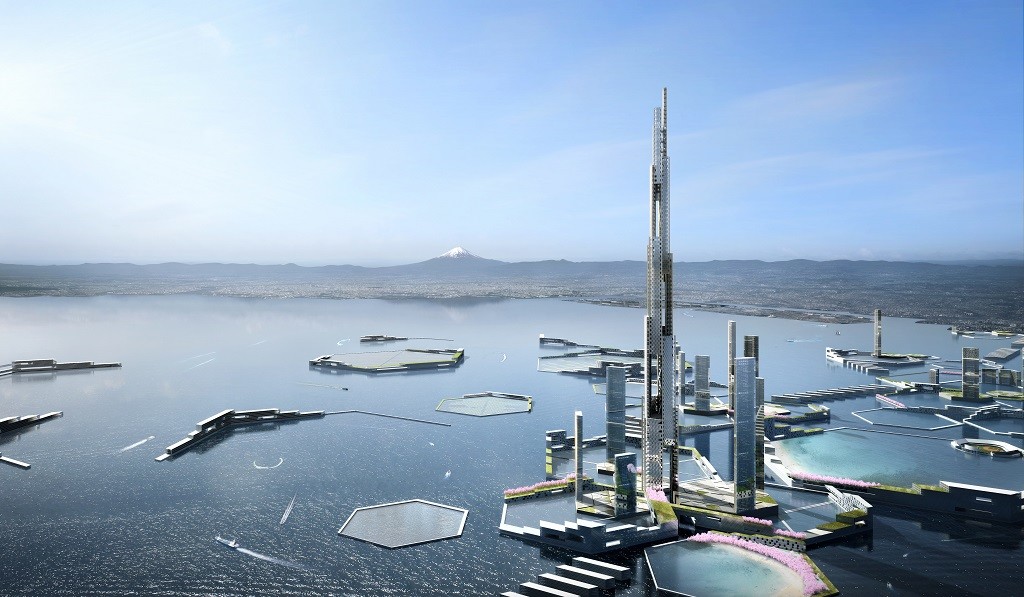The highest skyscraper will rise in Tokyo

Japan is highly subject to earthquakes and tsunami, as we all sadly know. If we add to this all the relentless climate changes that are hitting our planet, for a country like Japan will be hard to look to the future with hope, since everyday aftershocks happen and sea level keep rising on. But Japan is also a land full of innovations, cutting-edge engineering minds with a broad sense of surviving and common wellness; to combine positive things Japan has and the negative ones its land offers, the Land of the Rising Sun is ready for a new important extreme engineering initiative. Thus, Kohn Pedersen Fox Associates (KPF) and Leslie E. Robertson Associates are working on a project called ‘Next Tokyo’, that foresees the creation of a futuristic district that will be capable of contrasting the rising sea level in the Tokyo Bay. In this project, the highest skyscraper in the world will rise: indeed, the Sky Mile Tower will be 1,6 km high, basically twice as much the current highest one, that is Burj Khalifa in Dubai, that with its 828 m will do nothing other than disfigure. It will be a residential skyscraper, surrounded by hotels, restaurants, gyms, offices and hospitals, and it will host until 55.000 people.

The designers are not interested so much in the highness as they’re in the functionality within the bay. Indeed, thanks to its slim hexagonal shape, the skyscraper will resist to the strong wind strains, that pass through the building thanks to some vertical splits integrated in the building frame. Wind tunnel tests showed that this shape is capable of broking the vortexes that could stress critically the structure in its highest spots.

Besides it will be a total auto-sufficient and environmentally sustainable skyscraper; since pumping the water from the soil to the highest layers would cost too much money and energy, the engineers have thought about an upside-down system. They conceived a facade capable of catching, treating and storing the rainwater that, after being made potable, it will be naturally distributed, according to gravity laws. Solar panels and turbines will complete the structure.

The principal project goal is to contrast the rising sea level, though. To do this, the skyscraper will be surrounded by many hexagonal rings of several dimensions, imagined in layers of 150 m to 1500 m in width, that will act as small dykes, with the important tasks to break up strong waves and to allow ships to get to the near harbor. Some of these rings will be filled with water and will work as totally auto-sufficient floating greenhouse; besides the salty water from the bay will be used to raise seaweeds that could be used as sources for renewable and clean combustible.

The purpose is to create a resilient building, auto-sufficient, environmentally-friendly capable of resisting to climate changes and near earthquakes: an extreme idea that will take form not before 2045.

